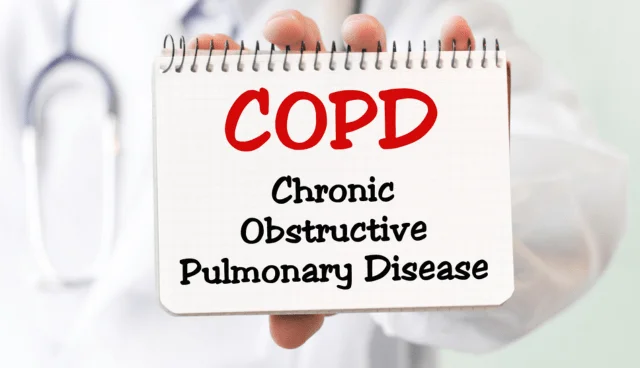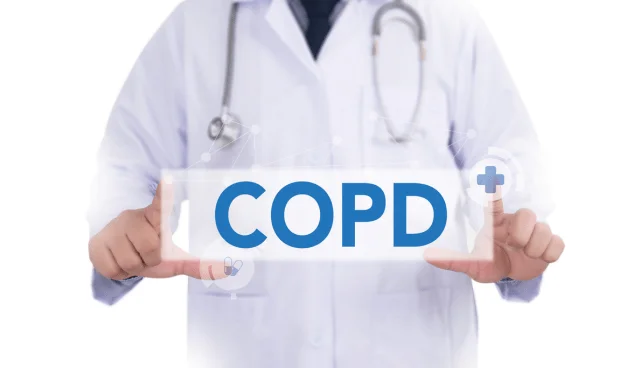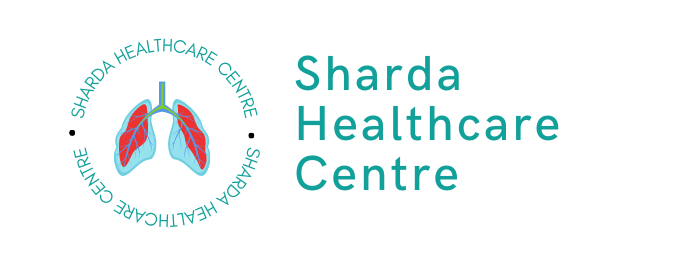
COPD Symptoms: Causes, Stages, Diagnosis, and Treatment
Chronic Obstructive Pulmonary Disease (COPD) is a prevalent chronic lung disease that affects millions of people worldwide. It is a progressive condition that can significantly impact an individual’s quality of life if left untreated. In this comprehensive guide, we will delve into the various aspects of COPD, focusing on its symptoms, causes, stages, diagnosis, and available treatments. By the end of this article, you will have a clear understanding of COPD and be better equipped to manage it.
What is COPD?
COPD, or Chronic Obstructive Pulmonary Disease, is an umbrella term for a group of progressive lung diseases that cause breathing difficulties. The two most common conditions falling under this category are chronic bronchitis and emphysema. In COPD, the airways become narrowed and obstructed, making it challenging to breathe. Let’s dive into the symptoms of COPD to better understand this condition.
COPD Symptoms
1. Shortness of Breath (Dyspnea):
One of the hallmark symptoms of COPD is the persistent feeling of breathlessness, even during routine activities like walking or climbing stairs. Over time, this shortness of breath can worsen and become a significant hindrance in daily life.
2. Chronic Cough:
A persistent, chronic cough is another common symptom of COPD. This cough often produces mucus (sputum) and may be one of the first signs of the disease.
3. Wheezing:
During breathing, there is a high-pitched whistling sound called wheezing. It is caused by the narrowing of airways in the lungs and is a frequent symptom of COPD.
4. Excessive Mucus Production:
People with COPD often produce an excessive amount of mucus, which can contribute to coughing and difficulty breathing.
5. Chest Tightness:
Many individuals with COPD experience a sensation of tightness or pressure in the chest, making it uncomfortable to breathe.
6. Fatigue:
COPD can lead to reduced oxygen intake, resulting in fatigue and a lack of energy. This fatigue can affect a person’s ability to engage in physical activities.
7. Frequent Respiratory Infections:
Due to the impaired function of the respiratory system, individuals with COPD are more susceptible to respiratory infections like pneumonia and bronchitis.
8. Blueness of Lips or Fingertips (Cyanosis):
In severe cases, a lack of oxygen in the bloodstream can cause the lips or fingertips to turn blue or grayish.
9. Unintended Weight Loss:
COPD can lead to reduced appetite and weight loss, which may be a consequence of the increased energy expenditure associated with labored breathing.
COPD Causes
Understanding the causes of COPD is crucial in preventing and managing the disease. Cigarette smoking is the main risk factor for developing COPD. In fact, approximately 85-90% of COPD cases are directly related to smoking. Other elements that may cause COPD include:
1. Exposure to Airborne Irritants:
Long-term exposure to indoor and outdoor pollutants, such as dust, chemicals, and fumes, can increase the risk of COPD.
2. Genetics:
Some individuals may have a genetic predisposition to developing COPD, which can make them more susceptible, even without extensive exposure to risk factors.
3. Alpha-1 Antitrypsin Deficiency:
This is a rare genetic condition that can lead to the early development of emphysema in individuals with the deficiency.
4. Occupational Exposures:
Certain jobs, such as those involving exposure to dust, chemicals, or fumes, can increase the risk of COPD.

COPD Stages
COPD is typically categorized into four stages, ranging from mild to very severe, based on the severity of symptoms and the level of lung function impairment. These stages are often referred to as the GOLD stages, named after the Global Initiative for Chronic Obstructive Lung Disease.
Stage 1 - Mild:
In this stage, individuals have mild airflow limitation, with a FEV1 (Forced Expiratory Volume in 1 second) of 80% or more of the predicted normal value. Symptoms may be subtle, and some individuals may not even realize they have COPD at this stage.
Stage 2 - Moderate:
At this stage, the airflow limitation worsens, with a FEV1 between 50% and 80% of the predicted normal value. Symptoms become more noticeable, including increased breathlessness and cough.
Stage 3 - Severe:
In the severe stage, FEV1 drops to between 30% and 50% of the predicted normal value. Breathing difficulties become significantly limiting, and exacerbations (sudden worsening of symptoms) may occur more frequently.
Stage 4 - Very Severe:
The final stage of COPD is characterized by a FEV1 of less than 30% of the predicted normal value. Symptoms are extremely severe, and quality of life is greatly impaired. Hospitalizations and respiratory failure become more common.
Signs of COPD
While the symptoms mentioned above are indicative of COPD, there are several signs that healthcare professionals look for when diagnosing the disease:
1. Abnormal Lung Sounds:
During a physical examination, a healthcare provider may detect abnormal lung sounds, such as wheezing or crackles, when listening to the patient’s chest with a stethoscope.
2. Decreased Breath Sounds:
Reduced breath sounds in specific areas of the lungs can be a sign of COPD.
3. Clubbing of Fingernails:
In advanced COPD, the fingertips may become enlarged and the nails may curve downward, a condition known as clubbing.
4. Barrel Chest:
Long-term air trapping in the lungs can lead to a barrel-shaped chest, where the chest becomes larger and more rounded in appearance.
5. Cyanosis:
As mentioned earlier, blueness of the lips or fingertips can indicate a lack of oxygen in the blood, a sign of severe COPD.
COPD Diagnosis
Combining a medical history, physical exam, lung function testing, and imaging investigations allows for the diagnosis of COPD. Here are the key steps involved in the diagnosis of COPD:
1. Medical History:
The healthcare provider will inquire about the patient’s smoking history, exposure to lung irritants, family history of lung disease, and the presence of symptoms like cough, shortness of breath, and mucus production.
2. Physical Examination:
A thorough physical examination, including listening to lung sounds and assessing overall health, is performed to identify signs of COPD.
3. Lung Function Tests:
Pulmonary function tests (PFTs) are crucial for diagnosing and assessing the severity of COPD. The most common test is spirometry, which measures lung function by evaluating the volume and flow of air that can be inhaled and exhaled.
4. Chest X-rays:
A chest X-ray may be ordered to rule out other lung conditions and to check for signs of COPD, such as an enlarged chest or flattened diaphragm.
5. CT Scans:
In some cases, a computed tomography (CT) scan may be recommended to get a more detailed view of the lungs, especially if there are concerns about other lung conditions or to assess the extent of damage.
6. Blood Tests:
Blood tests may be conducted to check for elevated levels of certain proteins or markers associated with COPD or other lung diseases.
Once a diagnosis is confirmed, the healthcare provider will determine the stage of COPD, which is crucial for treatment planning.
COPD Treatment
While COPD is a chronic and progressive disease, several treatment options are available to manage symptoms, improve lung function, and enhance overall quality of life. Treatment plans are tailored to the individual’s specific needs and the stage of the disease. Here are some key components of COPD treatment:
1. Smoking Cessation:
If the individual with COPD is a smoker, the most important step in treatment is quitting smoking. Smoking cessation significantly slows the progression of the disease and reduces exacerbations.
2. Medications:
- Bronchodilators: These drugs work to relax the muscles in the airways, which facilitates breathing. They can be administered via nebulizers or inhalers.
- Inhaled Corticosteroids: These are used to reduce inflammation in the airways.
- Phosphodiesterase-4 Inhibitors: This class of medications reduces airway inflammation and can help prevent exacerbations.
3. Oxygen Therapy:
In cases of severe COPD, supplemental oxygen therapy may be necessary to ensure the body gets enough oxygen. Portable oxygen tanks or concentrators can be used to provide oxygen as needed.
4. Pulmonary Rehabilitation:
Pulmonary rehabilitation programs offer exercise training, nutritional counseling, and education to improve physical function and quality of life for individuals with COPD.
5. Vaccinations:
Getting flu and pneumonia vaccinations is essential for preventing respiratory infections, which can worsen COPD symptoms.
6. Lung Volume Reduction Surgery:
In some cases, surgery may be considered to remove damaged lung tissue, allowing the remaining healthy lung tissue to function more effectively.
7. Lung Transplant:
For individuals with end-stage COPD, a lung transplant may be the only option to improve their quality of life and survival.
8. Coping Strategies:
Learning to manage anxiety and stress related to COPD is crucial. Breathing techniques, relaxation exercises, and support from healthcare professionals or support groups can be helpful.
Conclusion:
COPD is a complex and progressive lung disease that can significantly impact an individual’s life. Understanding the symptoms, causes, stages, and diagnosis of COPD is essential for early detection and effective management. While there is no cure for COPD, various treatments and lifestyle changes can help individuals with COPD lead fulfilling lives and slow the progression of the disease. If you or someone you know is experiencing symptoms of COPD, seek medical attention promptly to receive a proper diagnosis and develop a personalized treatment plan. Remember that quitting smoking is the single most effective step in managing COPD and improving overall lung health. With the right approach to care, individuals with COPD can enjoy a better quality of life and breathe easier.
